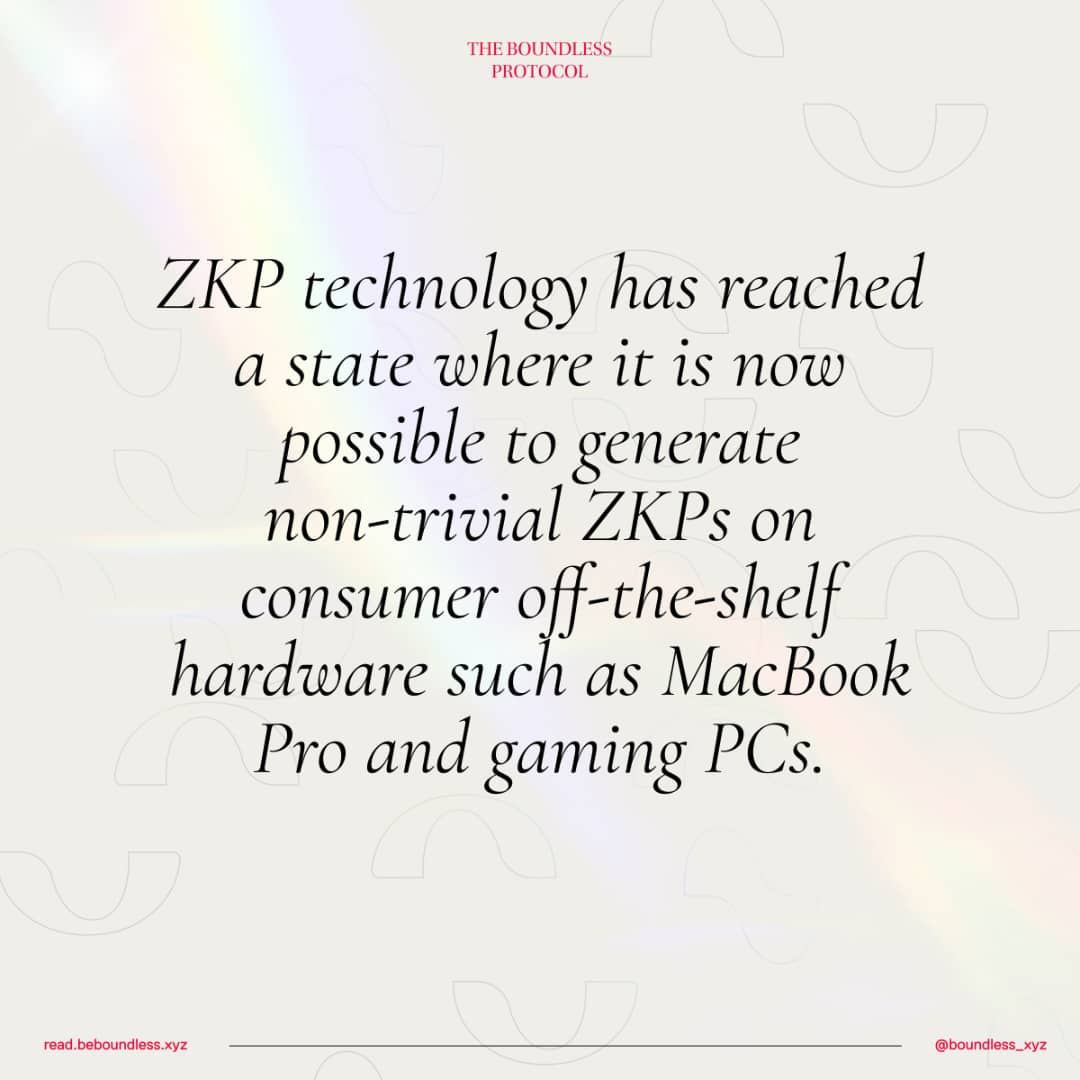Came for the berries, stayed for the proofs!
I’ll be honest with y'all, I’m in it for the berries. If you’re active on CT, only one brand will come to mind when you see “berries,” and that’s Boundless.
I came across Boundless some months ago, but took a second look back in April, and you should sit for this one. It’s going to be a berry juicy article. I’ll start by explaining keywords that you’ll come across in this article.
Keywords
ZKPs (Zero Knowledge Proofs): Zero-knowledge tech is classified as a privacy-enhancing technology (PET), and it involves verification of a claim without knowledge of what the claim is. ZK tech is a privacy-focused verification technique that allows party A to prove the accuracy/validity of a claim to party B without revealing the actual content of the said claim. I gave a basic explanation of zk in this article.
ZK proofs are cryptographic primitives generated by party A to show party B that the claim is valid. Party B verifies these proofs before accepting that the claim is correct. Speaking of parties, that brings us to our second keyword.
Provers: A prover is party A. They generate proofs and submit them to party B. They’re like workers who perform tasks available to them. Provers are those (operators) with the required computational resources (GPU) to generate zk proofs.
Requestors: A requestor is party B. They request these ZK proofs. They’re like the clients who put up the tasks that the provers perform. In this case, requestors are apps, rollups, exchanges, bridges, etc.
Verifiable computation: When computations are carried out off the blockchains, they must be verified. Zk rollups are the perfect examples. Zk rollups process transactions off the main chain and use zk proofs to verify the computations offchain.
Verifying computations offchain helps with scalability & is cost-effective. So Boundless enables not just rollups but also apps to verify computations offchain. Proofs are generated to validate these offchain computations. See the correlation?
PoVW (Proof of Verifiable Work): PoVW is not a consensus mechanism. It’s a mechanism that Boundless employs to measure the computational output to ensure that provers are paid according to the quality of their work.
Don’t worry, it’ll all make sense soon. Moving on…
Boundless: Farmers’ Market Got Nothing on it
Boundless just set up shop in the Farmers’ Market and the berries are selling fast.
As the name suggests, Boundless is limitless. It is not constrained to one blockchain or platform. With no bounds, it works across various blockchains, facilitating trading of verifiable compute as though it’s a commoditized product.
During the ‘Proof of Read’ community initiative that Boundless had in April, they asked interested participants to highlight their favorite section of the whitepaper and quote it (preferably with context behind the choice). This was my submission (below), and my reason is that it shows how far ZK tech has come.
Source: Boundless whitepaper
It is now possible to generate non-trivial zk proofs with the right resources, meaning the barrier to entry is getting lower. That is why 𝗏̶𝖾̶𝗋̶𝗂̶𝖿̶𝗂̶𝖺̶𝖻̶𝗅̶𝖾̶ berryfiable compute is getting commoditized. Since it’s now commoditized, it’ll become less expensive for apps to pay for and that’s where Boundless shines.
How Boundless Works:
Like every business that involves buying and selling, there needs to be a marketplace. Boundless is that marketplace. Boundless matches zk proof requests from requestors and proofs from provers. Requestors place their bids for proof requests on Boundless. Provers perform the computation and generate the proofs, then submit them. Provers are paid with the bids the requestors place.
Requestor needs zk proofs → He submits a request on Boundless along with his bid (the amount he’s willing to pay the prover that’ll complete the task of generating the proofs) → The request submitted entails the specifics of the computation so the prover can estimate if the bid is acceptable for the task.
Reverse Dutch Auction Mechanism for Price Agreement
The reverse Dutch auction mechanism is how provers and requestors agree on the price of the task. In a Dutch auction model, bids start at a high price and then gradually decrease. In a reverse Dutch model, bids start from a low price and then gradually increase. Here’s how it works in Boundless’ case:
The requestor places the request and attaches a small amount to see if any prover will pick it up.
As time passes and no prover picks up the request, the bid is programmatically increased.
This gradual price increase goes on until one of the two happens: (1) A prover agrees to fulfil the request or (2). The requestor can not increase the bid any longer (usually marked by a set maximum price), and so the request is left unfulfilled if no one picks it up.
The reverse Dutch auction mechanism is good for requestors as they get favorable prices based on their adjusted conditions. During the auction and bid increase, a prover can either immediately fulfil the request (once he agrees that the price is good enough) or lock the request to ensure no other prover can take it away. Let’s take a look at each.
Fulfil the request immediately: Assuming a prover has a set price below which he cannot accept a request. Say the lowest price he can accept to fulfil a request is 0.002 ETH. The requestor starts his bid from 0.0005 ETH. After some time, the bid increases to 0.001 ETH. *Crickets* The bid increases again to 0.0015. Still crickets. Again, the bid programmatically increases to 0.002 ETH. The prover strikes, knowing he can generate proof for this price. He can accept it and fulfil the request immediately..
Lock the request: To prevent a situation where a competitor swoops in and gets the deal, a prover can opt to lock the request at an agreeable amount. Locking a request means locking up some stake and getting a guaranteed right to fulfill that particular request.
There’s a clause though - a lock timeout/deadline. If a prover fails to fulfill the request before the deadline, their locked stake is slashed as punishment. Btw, it’s the requestor that specifies the deadline when submitting the request. The requestor can refuse to allow locking for any reason and only enable immediate fulfillment.
If the prover fulfils the request before the timeout, he gets paid (referred to as the prover’s fee). Requestor’s bid - market fee = prover’s fee.
What happens to the prover’s slashed stake? The screenshot below explains it. Source: Boundless whitepaper.
Market Models
The whole proof request, verifiable computation, and proof generation on Boundless works on one of these market models: spot markets and service agreements.
Spot Market
The type of model described under the Dutch auction sub-section is a spot market, where the business is straightforward. Place bid, provers accept, proof is generated & verified, and fees are paid. There’s another model called ‘service agreements.’
Service Agreements
If, for instance, a requestor knows that he’ll be needing more requests in the future, he can make a deal with a prover. The requestor pays an upfront fee to the prover for future work. Smart contracts (called the service agreements) make this agreement immutable and traceable in case of malicious behavior from the prover.
Proof of Verifiable Work (PoVW)
PoVW is Boundless’ approach to ensure provers are rewarded proportionally for their quality contributions. Boundless tracks each prover’s work & the value they provide to the market to make sure they’re rewarded based on their contributions. With this, provers get two sources of revenue: the payment from the requestors (recall the prover’s fee I mentioned earlier) and the one they receive from Boundless for PoVW (in their native token, to be discussed in the next section).
Token - $ZKC
Boundless will have its native token. Ticker is ZKC. This token will serve multiple purposes, but one of the most notable mentions is that it’ll be used to reward provers for doing quality work (proof of verifiable work reward system).
Final Thoughts/Conclusion
In recent times, the term “zk” has grown in usage, especially with Google announcing that it’ll start implementing zk tech for private age and identity verification. Also, there’s the gradual rally around privacy. Zero-knowledge tech has been around for a while now, and its use cases are now being explored. Boundless is one of the frontrunners of zk tech being developed by Risc Zero.






